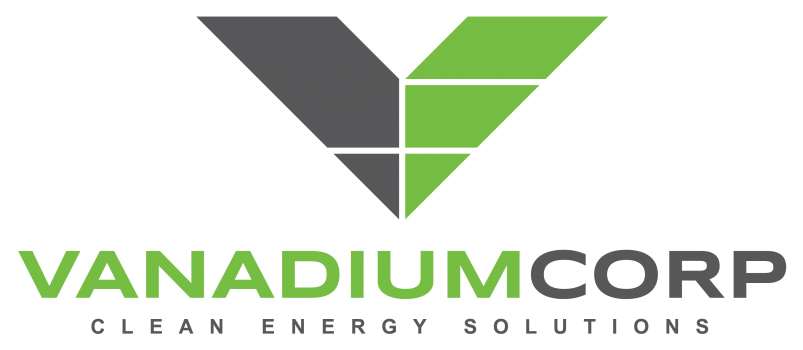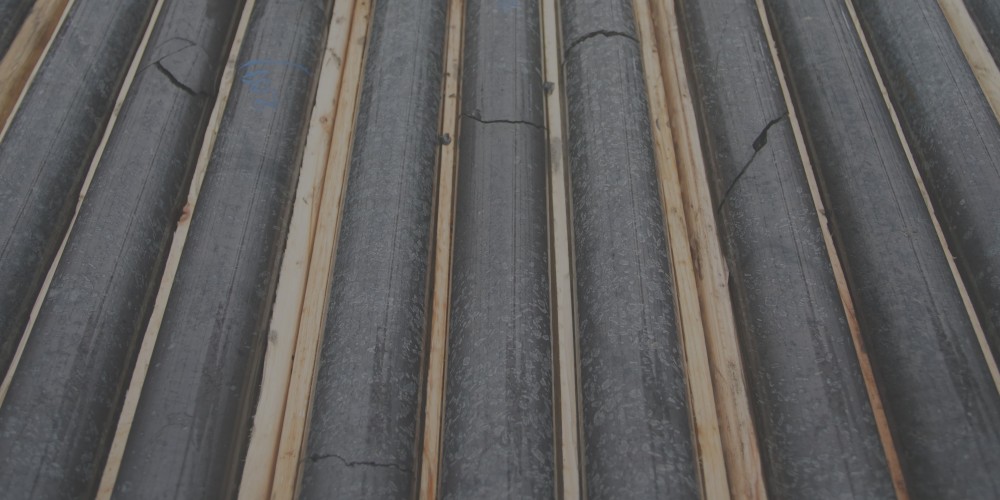VANADIUMCORP CONTRACTS METALLURGICAL TESTING ON LAC DORÉ BULK SAMPLES Vancouver, British…
VanadiumCorp and CENELEST Testing Next Generation Electrolyte For Vanadium Redox Flow Batteries for Mobile Applications
VANCOUVER, BRITISH COLUMBIA, December 8th, 2020 – VanadiumCorp Resource Inc. (TSX VENTURE: “VRB”) (OTCBB: “APAFF”) (FRANKFURT: “NWN”) (the “Company”) is pleased to announce the extensive testing of vanadium bromide “V-Br” electrolyte for VanadiumCorp by CENELEST, the German-Australian Alliance for Electrochemical Technologies for Storage of Renewable Energy. The testing is part of the tri-lateral (CENELEST-VanadiumCorp) project focused on achieving a higher energy density vanadium electrolyte and successful operation in an advanced vanadium redox flow battery cell.
CENELEST research and development for this project was and is performed at both the University of New South Wales “UNSW” Sydney, Australia and Fraunhofer Institute for Chemical Technology “ICT” in Germany, Europe. All three parties contributed technologies and several provisions for the V-Br electrolyte project. V-Br electrolyte represents the potential for a revolutionary advancement in the vanadium flow battery that could enable safe and long-life “zero emission” electrochemical energy for mobile applications (heavy duty vehicles, trains, ships, and many others) that require higher energy density battery systems only previously possible with lithium-ion.
VanadiumCorp-CENELEST conducted work in 2020 includes V-Br electrolyte formulation, electrolyte physicochemical properties characterization, cell component material selection and cell performance testing. VanadiumCorp will showcase advances made on the electrolyte and vanadium cell in Q1, 2021. The V-Br work follows the pioneering research UNSW Engineering has conducted since the 1980s on vanadium flow battery systems, which was led by their creator Emeritus Professor Maria Skyllas-Kazacos who is also an Advisory Board member of VanadiumCorp since 2011.
A higher energy density V-Br electrolyte and advancements in stack architecture could represent two to three times (2 to 3X) the energy stored and made available by a conventional VRFB. The implications for global sustainability and various industries transitioning to zero emissions is a potential game-changer.
Adriaan Bakker, Chief Executive Officer of VanadiumCorp, “We are at the forefront of VRFB innovation with CENELEST that could facilitate the electrification of both stationary and mobile applications. Vanadium is the only renewable metal in energy storage, and we plan to produce it with our 100% owned green technology as green fuel in energy storage that can be scaled to any size.”
About CENELEST – The German-Australian Alliance for Electrochemical Technologies for the Storage of Renewable Energy
The constantly increasing proportion of renewable energy supplied to the grid means that energy storage systems are becoming increasingly important. Until now, very few energy storage technologies have been able to reach the required levels of technical maturity at competitive costs, especially in the area of electricity storage. Since 2017 the Fraunhofer Institute for Chemical Technology (ICT) and the University of New South Wales (UNSW) are working closely together as an alliance to intensify research activities in the field of electrochemical energy storage systems and to establish a joint international research center for stationary energy storage (CENELEST) at UNSW in Sydney, Australia.
The aim of this cooperation is to strengthen the world-class expertise in redox flow batteries, and concurrently develop other types of batteries and fuel cells in order to cover the entire range of electrochemical energy storage needs. Through the exchange of already existing extensive knowledge, advanced modern equipment and research networks, topics can be tackled more efficiently than would be possible with the partners acting individually. Within the framework of this process, common research preferences have been established and started at an early stage. These activities are continuously being developed through the exchange of researchers and students between institutions. This allows innovative research with additional topics on the economic operation of energy storage solutions to be taken into account both in general and in connection with renewable energy networks. In the context of linking fundamental research (UNSW: simulation, materials, heat transfer, rapid prototyping, chemistry) and applied research (Fraunhofer ICT: electrochemistry, cells, systems, production) the work is not only focused on scientific competences, but also on the requirements of industry. This provides industry easier access to the extensive capabilities of both institutions. In addition to the core competencies, this also allows for an in-depth analysis of interdisciplinary issues, e. g. together with the areas of weather forecasting, control systems, grid integration, as well as social aspects, safety and life cycle assessment.
The Fraunhofer Institute for Chemical Technology (ICT) and the University of New South Wales (UNSW) are working closely together as an alliance to intensify research activities in the field of electrochemical energy storage systems and to establish a joint international research center for stationary energy storage (CENELEST) at UNSW in Sydney, Australia. The aim of this cooperation is to strengthen the world-class expertise in redox flow batteries, and concurrently develop other types of batteries and fuel cells in order to cover the entire range of electrochemical energy storage needs for renewable energy.
About VanadiumCorp
The Company is focused on the commercial development of its 100% owned VanadiumCorp-Electrochem Process Technology “VEPT”, a green and efficient chemical process invented by Dr. Francois Cardarelli, that addresses the recovery of vanadium, iron, titanium, and silica from feedstocks such as vanadiferous titano-magnetite, iron ores and other industrial by-products containing vanadium. Furthermore, VanadiumCorp’s mandate is to become a strategic supplier of renewable, Next Generation vanadium electrolyte for redox flow batteries and other high purity applications that benefit most from exclusively green and cost-effective vanadium. VanadiumCorp Resource Inc. plans to license VEPT globally and integrate VEPT into the development of the 100% owned Lac Doré vanadium-titanium-iron flagship project adjacent to Blackrock Metals Inc.’s property, which is currently permitted to build a mine and mill to produce a vanadium-rich magnetite concentrate product. VanadiumCorp provides investors with leverage to vanadium, titanium and iron in the mining-friendly and geopolitically stable jurisdiction of Québec, Canada. Green recovery technology, primary vanadium resource size, superior grades, and well-developed infrastructure, puts VanadiumCorp in a valuable strategic position to take advantage of the strong vanadium market driven by supply shortages and growing demand from the Chinese and global steel industries, as well as the fast-emerging renewable use of vanadium in sustainable energy storage for stationary to unlimited scale applications. Nearby infrastructure at Lac Dore includes a 161kV Hydro Power at approximately $.02 kWh, CN Rail Line, available water, local airport, and a mining community of over 7,000 people in the city of Chibougamau.
On behalf of the board of VanadiumCorp:
Adriaan Bakker
President and Chief Executive Officer
For more information:
Adriaan Bakker,
President and CEO, VanadiumCorp Resource Inc. (TSX-V: “VRB”)
By phone: 604-385-4489
By email: moc.procmuidanav@ofni
Website: www.vanadiumcorp.com
Neither the TSX Venture Exchange nor its Regulation Services Provider (as that term is defined in the policies of the TSX Venture Exchange) accepts responsibility for the adequacy or accuracy of this release.
Cautionary & Forward-Looking Statements
This release contains forward-looking statements. All statements other than statements of present or historical fact are forward-looking statements, including statements with respect to the anticipated use of Private Placement proceeds and anticipated receipt of final TSX Venture Exchange acceptance for the Private Placement. Forward-looking statements include words or expressions such as “will”, “subject to”, “expect” and other similar words or expressions. Factors that could cause future results or events to differ materially from current expectations expressed or implied by the forward-looking statements include general business, economic, competitive, political and social uncertainties; the state of capital markets and risks that may impact the Company’s business, operations and financial condition. Although the Company believes that the expectations reflected in these forward-looking statements are reasonable, undue reliance should not be placed on them because the Company can give no assurance that they will prove to be correct. Since forward-looking statements address future events and conditions, by their very nature they involve inherent risks and uncertainties. Additional information on these and other factors that could affect the Company’s operations and financial results are included in reports on file with Canadian securities regulatory authorities and may be accessed through the SEDAR website (www.sedar.com). We disclaim any obligation to update or revise these forward-looking statements, except as required by applicable law.


